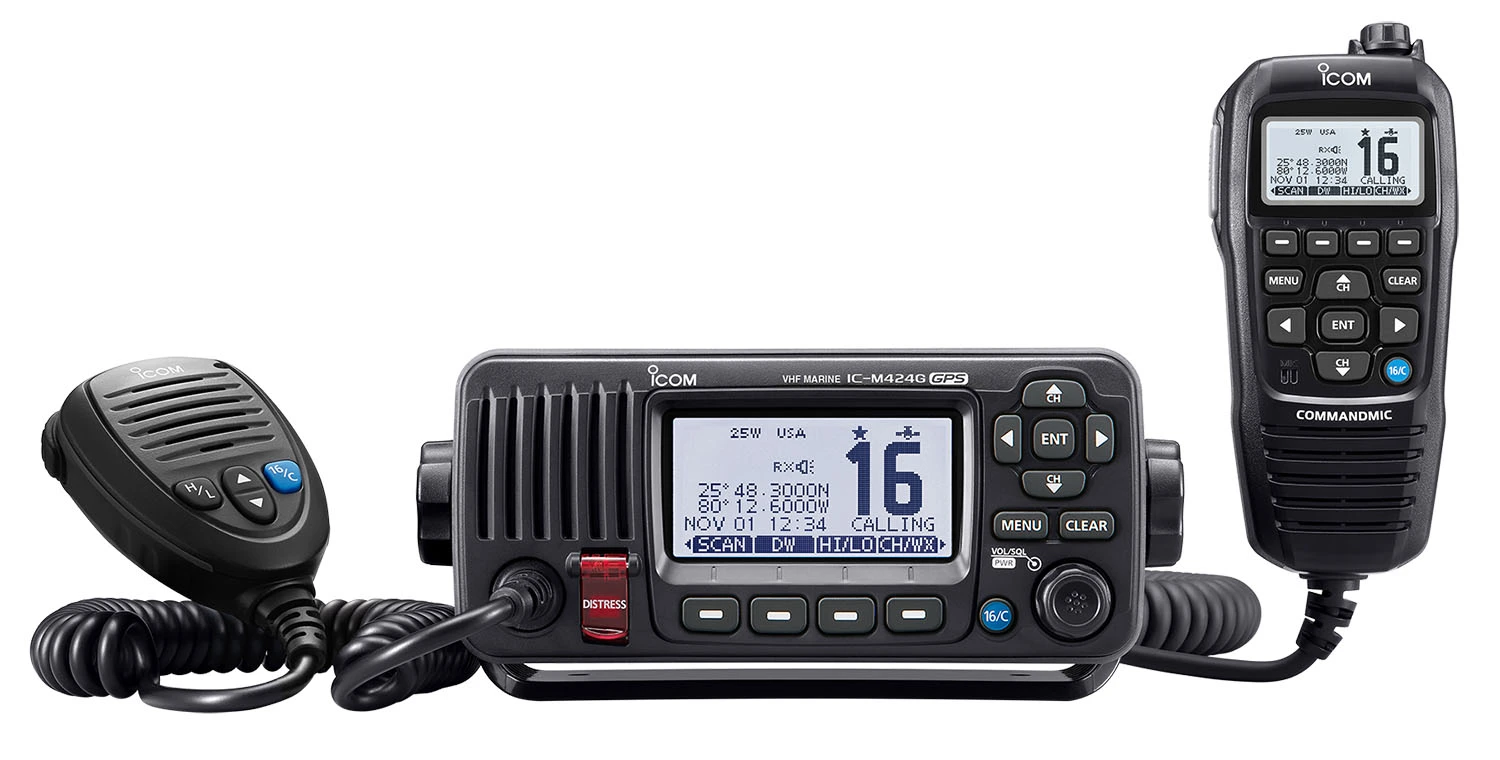Understanding Digital Selective Calling (DSC) Radios
In the dynamic world of commercial maritime operations, effective communication is paramount. Digital Selective Calling (DSC) radios stand at the forefront of this communication revolution, offering advanced features that enhance efficiency and safety. This blog post takes a deep dive into the functionalities and benefits of DSC radios for commercial use.
How DSC Radios Work
Automated Communication
DSC radios utilize digital signals to automate and enhance communication. Unlike traditional voice transmissions, DSC radios enable vessels to send and receive digital messages, streamlining the process and providing a standardized format for communication.
Unique Identification
Each vessel equipped with a DSC radio is assigned a unique Maritime Mobile Service Identity (MMSI) number. This identification ensures that messages are directed to the intended recipient, eliminating ambiguity in communication and reducing the risk of errors.
Benefits of Using DSC Radios
Increased Reliability
DSC radios offer increased reliability compared to traditional analog systems. The digital nature of communication minimizes the chances of interference, ensuring clear and crisp transmissions even in challenging maritime environments.
Quick and Precise Communication
DSC radios facilitate quick and precise communication through the use of predefined messages. Vessels can send distress signals, position reports, and other essential information with just a few button presses, reducing the time required for critical communications.
Key Features of DSC Radios
Distress Alerting
One of the standout features of DSC radios is their distress alerting capability. In emergencies, a vessel can send a distress call with its precise location, triggering an automatic response from nearby vessels and rescue services.
Position Polling
DSC radios allow vessels to request the position of other nearby vessels. This feature enhances situational awareness and aids in collision avoidance, contributing to overall maritime safety.
Individual and Group Calling
DSC radios support both individual and group calling functionalities. This versatility enables vessels to communicate directly with specific counterparts or broadcast messages to a group, fostering efficient coordination.
Integration with Commercial Operations
Seamless Navigation Integration
DSC radios seamlessly integrate with navigation systems, allowing vessels to send and receive position information directly. This integration streamlines communication within the broader context of navigation, enhancing overall operational efficiency.
Automated Log Keeping
DSC radios automatically log communication events, including distress calls and routine messages. This feature simplifies record-keeping for commercial operators, ensuring compliance with regulations and providing a valuable historical communication log.
Safety and Emergency Communication Capabilities
Automated Distress Calls
In emergency situations, DSC radios can automatically send distress calls, complete with vessel identification and precise coordinates. This automation reduces response time, increasing the chances of a swift and effective rescue.
Redundancy for Safety
DSC radios often serve as a redundant safety measure alongside traditional voice communication. This redundancy ensures that critical distress signals are transmitted, even in scenarios where voice communication might be challenging.
Enhancing Communication Efficiency with DSC Radios
As commercial maritime operations evolve, embracing the features of DSC radios becomes imperative for efficiency and safety. Whether you are exploring handheld VHF marine radios or seeking a reliable digital mobile radio solution, www.staging2.tecomart.co offers a range of options to suit your communication needs. Elevate your communication capabilities, navigate with confidence, and ensure the safety of your maritime endeavors with the advanced features of DSC radios.








0 Comments